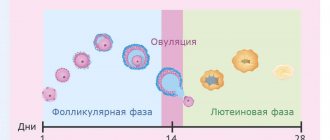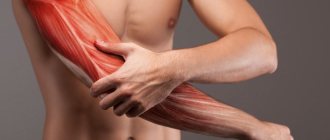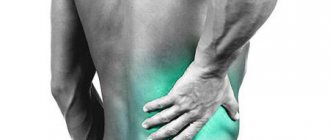Pain in the ovaries — For clarification about the causes and treatment of this symptom, women often turn to the gynecologists of our Leib Medic medical center, which is conveniently accessible for treatment from many districts of Moscow. Treatment of pain in the ovaries is one of the specialized areas of our medical center, where experienced responsible doctors of various specialties work, including gynecologists. The cause of pain in the ovaries can be the following diseases, pathologies and conditions that require professional treatment or observation:
- ovarian apoplexy
- polycystic ovary syndrome
- ovarian cyst
- the presence of microbial lesions of the ovaries
- ovarian cancer
- natural causes of ovarian pain
- pain in the ovaries during abortion
- pain in the ovaries when taking birth control pills
- pain in the ovaries during artificial insemination
The female reproductive organ system is represented by the uterus and ovaries. The ability to produce offspring and the health of the unborn child depend on the condition of the ovaries. However, more than 70% of women, especially in cities, suffer from various problems of the reproductive system, including the ovaries. Much of the reason for this is the lifestyle that modern ladies adhere to and especially their clothing. After all, even in severe frosts, women prefer to wear miniskirts instead of warm clothes.
Why do my ovaries hurt, left or right?
Typically, pain in the ovarian area is cramping and stabbing in nature. However, based on these signs, it is impossible to accurately determine that it is the ovaries that are hurting. After all, inflammation of appendicitis, kidney disease and digestive system have the same expression. Therefore, you should not diagnose yourself; you can see a gynecologist at our medical center in Moscow.
In some cases, the pain may be periodic. In this case, the pain manifests itself either in the lower abdomen, then in the kidney area or in the pubic area. At times you may experience leg cramps. Pain in the left ovary is rare and mainly indicates a harmful external influence. If there is pain in the left ovary, most likely it is due to the medications you are taking.
Pain in this area indicates problems with the reproductive system or hormonal phenomena. Both types of illness can lead to complications, so you should not delay the examination. Only an experienced doctor will be able to accurately determine the disease and say exactly why the ovaries hurt.
Classification of endometriosis
Endometriosis of the uterus is primarily divided by location into:
- internal endometriosis, or adenomyosis (invasion of endometrioid elements into the thickness of the endometrium);
- external endometriosis: intraperitoneal (damage to the peritoneum covering the uterus, tubes, retrouterine space, bladder, surface of the ovaries) and extraperitoneal (damage to the vaginal part of the cervix, vagina, retrocervical area).
According to the prevalence, adenomyosis is focal, cystic and nodular.
There are two types of ovarian endometriosis, depending on the type and location:
- formation of lesions on the surface of the ovary or in the cortex;
- the formation of endometrioid cysts from 0.5 to 10 cm in diameter, the dense capsules of which form adhesions with the surrounding tissues.
Other classifications take into account the origin, depth and area of the lesion, anatomical manifestations of endometriosis and other parameters.
Treatment of ovarian apoplexy at Life Medic
Ovarian apoplexy is one of the most serious problems. In this case, hemorrhage occurs in the ovary, which poses a threat to the normal functioning of this organ. To understand how this happens, it is necessary to consider the menstrual process in a woman’s body:
1. When an egg matures in a follicle, it must receive sperm.
2. This does not happen and due to the death of the egg, menstruation occurs.
3. The blood of the dead egg filling the follicles is removed from the body.
So at this time, these organs are especially tense, as they are filled with blood, and the risk of damage to blood vessels also increases. When the walls of the ovary cannot withstand it, the blood entering it from the artery spills inside.
Causes of ovarian apoplexy
In general, the right pair is more often susceptible to apoplexy, since it is larger and more blood circulates in it than in the left. Therefore, the right ovary hurts more often. Blood enters the right organ directly from the aorta, and the left one through the blood vessels of the kidney. This also causes increased pressure and tension in the right organ. So, if for some reason the right ovary hurts, then the reason is most likely apoplexy.
Ovarian apoplexy most often occurs in teenage girls and young women. In many ways, it is this group that is at risk, since the reproductive organs most actively perform their function in them. In very rare cases, apoplexy can result from mechanical damage. Other causes of apoplexy
In addition to natural processes, hemorrhage can be caused by:
- overly active sex
- improperly performed gynecological procedure
- excessive stress on muscles
These are all mechanical factors. However, there are also pathogenic factors:
- pathology of the uterus;
- tumors;
- varicose veins;
- improper healing after surgery or injury;
- ovarian inflammation
So pain is a symptom not only of disorders in these organs themselves.
Symptoms of ovarian apoplexy
The main sign of apoplexy in a woman’s body is acute pain in the ovary or lower abdomen, which aches. And usually the right ovary hurts. However, the disease may be accompanied by other signs:
- vomit;
- dry mouth;
- tachycardia;
- stickiness of sweat;
- hypotension;
- pale skin color;
- temperature increase.
Usually, additional symptoms indicate that the accumulation of blood has reached its critical level and an attack of pain may soon occur. When the right or left ovary is pulled, it is necessary to urgently consult a doctor, otherwise complications are possible.
Treatment of polycystic ovary syndrome at Leib Medic
Polycystic ovary syndrome is one of the main diseases leading to infertility. Cystosis develops very slowly and it is rarely possible to detect it in the initial stages. It is usually diagnosed accidentally, during the next examination. Tingling in the left or right ovary can be a symptom of a similar disease. However, polycystic disease can be expressed by tingling in the right ovary. The disease occurs due to improper formation of the egg. Sometimes due to pathologies of the ovary itself. In both cases, it is difficult for the egg to leave the organ and over time the channels begin to accumulate tissue of residual eggs and polycystic disease develops. Also, a large number of underdeveloped eggs accumulate in the organ itself. Polycystic ovary syndrome mainly occurs in women under 35 years of age. It is especially dangerous for teenagers who are just beginning to menstruate. The presence of cystosis, in addition to periodic pain, causes disruption of the menstrual cycle. So polycystic disease has a direct effect on hormonal functions. This can disrupt hormonal processes, which usually leads to cardiovascular diseases, diabetes, etc.
Causes of polycystic ovary syndrome
The exact reasons for the occurrence of polycystic ovary syndrome have not yet been identified. All patients had the following pathologies, which presumably lead to the development of this disease:
- endocrine system imbalance;
- insulin oversaturation;
- chronic inflammation;
- obesity;
- heredity.
Any of these pathologies can lead to the formation of ovarian cysts.
Symptoms of polycystic ovary syndrome
Doctors identify the following symptoms of cystic disease:
- abnormal menstruation;
- hypertrachia (excessive hairiness);
- skin problems;
- pulling sensation in the ovary area;
- excessive weight.
All these signs are associated with pain that occurs in the lower abdomen.
Treatment
When pain appears in the lower abdomen in women with a diagnosed ovarian cyst, urgent hospitalization and additional examination methods are required to exclude unwanted lethal complications.
The following instrumental studies are carried out in the hospital inpatient department:
- Ultrasound diagnostics;
- puncture;
- Diagnostic laparoscopy.
If the patient is diagnosed with a cyst rupture or torsion, as well as a large cyst, a decision is made on urgent surgery to remove the tumor. Among all types of surgical intervention on the pelvic organs, the minimally invasive method of laparoscopy is ideal - an operation that guarantees a minimum recovery period for the body. In the postoperative period, the gynecologist prescribes hormonal therapy to the patient in order to prevent relapses.
Microbes in the ovaries
Of course, the presence and large accumulation of harmful microorganisms in the organs of the reproductive system leads to inflammatory processes and gives rise to pain in the ovary. When the number of such microbes reaches a critical level, thrush and candidiasis develop.
At the same time, thrush indicates a decrease in immunity in a woman’s body, when candidiasis, like a fungal disease, develops as a result of:
- excess sugar in a woman’s body;
- hormonal surges;
- any infectious disease;
- excess antibiotics;
- poor hygiene of the intimate area.
For both thrush and candidiasis, the symptoms are almost identical and are expressed:
- in the presence of unpleasant odors;
- presence of itching;
- pain when urinating;
- inflammation of the genital organs;
- pulls the ovary;
- pain during sexual intercourse.
This disease can be cured with the help of anti-inflammatory and antibacterial agents.
Treatment of right-sided inflammation of the ovary
Treatment of right-sided oorphitis can be carried out on an outpatient basis or in a hospital setting. It all depends on the nature and complexity of the pathology. If the woman’s general condition is stable and there is no threat to her health, she can be treated at home under the strict supervision of a doctor. If the inflammatory process progresses and complications develop, the patient is hospitalized in order to constantly monitor her and promptly adjust the treatment regimen.
In addition to medications, physiotherapeutic techniques are often used to treat right-sided oorphitis, which enhance the effect of medications and speed up recovery. After relief of acute processes, it is advisable to resort to the following physiotherapy procedures:
- magnetic therapy;
- electrophoresis;
- acupuncture;
- paraffin applications;
- mud baths;
- Charcot shower;
- sanitation with mineral waters.
If the oorphitis is advanced, an adhesive process and irreversible deformations are observed in the ovary, surgical treatment is prescribed. Among the surgical methods, the laparoscopy procedure has proven itself, during which the surgeon cuts adhesions through small punctures in the abdominal cavity and removes deformed tissues. After surgery, prevention of relapse is necessary.
Prescribed drugs for inflammation of the right ovary
To stop an acute inflammatory process of a bacterial nature, antibiotics are prescribed. To eliminate pathological symptoms and strengthen the body, the following groups of drugs are additionally used:
- Nonsteroidal anti-inflammatory drugs. Relieves inflammation, swelling, pain.
- Painkillers. Relieves acute pain syndrome.
- Antipyretic. Used at high temperatures.
- Antihistamines. Relieve swelling with histamine blockers.
- Immunomodulators. Stimulate protective functions, increase the body's resistance to pathogenic infections.
- Biostimulants. Improve trophism and restoration of damaged tissues.
- Lactobacilli. Restore the balance of beneficial microflora, which suffers after taking antibiotics.
Ovarian cyst - treatment in Moscow, Life Medic clinic
Ovarian cyst is a common disease that occurs in women, and specialists from the Moscow medical center Life Medic assist patients in treating ovarian cysts using specialized techniques. Unlike polycystic disease, when tissue of underdeveloped eggs accumulates in this organ, when a cyst forms under the ovary, usually the right one, the cortical ovary swells pouch. This happens due to the accumulation of yellow cell fluid in it, which is actively released during the post-ovulation period. However, yellow cells are not always to blame. So:
- a cyst may be an accumulation of dead ovarian tissue, leading to the development of cancer;
- a thick-walled cyst usually results from epidermal deposition;
- a capillary cyst is usually a manifestation of natural organic processes;
- a multi-chamber cyst is a consequence of the accumulation of various tissues, including fluids, which also leads to cancer.
The exact reasons for the formation of cysts in women have not yet been established. Many experts argue that the main causes may be hormonal pathologies. In addition, there have been cases where the formation of a cyst was accompanied by chronic inflammatory processes. Usually, it is not possible to detect the presence of a cyst by observing external manifestations, because the formation of a cyst does not have any symptoms. Most cases are detected during a routine examination by a gynecologist. With excessive physical exertion or very intense sexual intercourse, pain may be felt in the right ovary.
Symptoms
In Internet search engines, the query “symptoms of ovarian cysts” is very common, since many women try to somehow comprehend the presence of a diagnosis of “ovarian cyst” and connect it with their feelings.
But, as a rule, most benign ovarian formations are detected during routine preventive examinations, and patients do not present any complaints (asymptomatic).
Currently, due to the widespread introduction of ultrasound examination, not only ovarian tumors (both benign and malignant), but also physiological (functional) ovarian cysts (corpus luteum cysts, follicular cysts), which are not a cause for alarm, have become more frequently diagnosed. and are subject to supervision.
However, in some cases, ovarian cysts have some symptoms. They are not always clearly expressed and quite often patients do not pay attention to them. But with a thorough conversation, the doctor is able to identify some manifestations characteristic of ovarian formations. The fact is that the body adapts to the presence of a tumor, especially in cases where its growth is slow. That is why, even in the presence of large formations of the uterus or appendages, a woman may not have any complaints. Although, after surgical treatment and removal of a tumor (ovarian cyst, uterine fibroids), many women note that there was indeed something “wrong” in their previous condition.
The main symptoms of ovarian cysts include:
- Pain.
- Enlargement of the abdomen in circumference.
- Menstrual irregularities.
- Symptoms of compression of internal organs.
- Infertility.
Pain
As a rule, pain from an ovarian cyst is localized in the lower abdomen, groin areas, and can spread to the lower back, sacrum and lower extremities. They are usually aching or dull in nature and are not associated with the menstrual cycle. With endometrioid cysts, on the contrary, the pain intensifies before menstruation and during menstrual bleeding. One of the symptoms of ovarian cysts is also pain during sexual intercourse.
The causes of acute pain in the presence of formations in the ovaries can be torsion of the tumor stalk, rupture of the capsule (see ovarian apoplexy), bleeding and infection. Sometimes there is constant pain in the lower abdomen associated with compression of neighboring organs due to the large size of the formation.
If the cyst capsule ruptures or the leg is torsed, the pain syndrome increases sharply, the pain becomes paroxysmal, acute, and can radiate to the rectum. With these complications, additional signs of an ovarian cyst may include increased or decreased blood pressure, sweating, dizziness, nausea and vomiting.
Acute pain is a serious symptom of ovarian cysts and, as a rule, requires emergency surgical intervention.
Chronic pain syndrome with ovarian tumors is caused by irritation and inflammation of the peritoneum, spasm of the smooth muscles of the bladder and other hollow organs. In addition, the tumor can irritate the nerve endings and choroid plexuses located in the pelvic cavity. When a large amount of content accumulates inside the cyst, its walls are stretched, the blood supply to the tumor is disrupted, resulting in the development of pain of varying severity. Aching pain is sometimes the main symptom of an ovarian cyst; other symptoms are either absent or mild.
With papillary cystadenomas and malignant tumors, pain occurs more often and earlier. This is due to faster growth; moreover, such tumors can grow into the bladder and rectal wall and affect the peritoneum. A feeling of heaviness and fullness in the lower abdomen is usually observed with mucinous cysts, as they often reach very large sizes.
Increase in abdominal circumference
One of the already dangerous symptoms of ovarian cysts is an increase in the circumference of the abdomen. This indicates either a large size of the ovarian mass or an accumulation of fluid in the abdominal cavity (ascites). Unfortunately, the latter, as a rule, accompanies malignant ovarian cysts and indicates a severe spread of the process.
Menstrual irregularities
Frequent symptoms of ovarian cysts also include menstrual irregularities, including dysfunctional uterine bleeding. The menstrual cycle becomes irregular and periods last longer than usual. Intermenstrual uterine bleeding often occurs. These symptoms are associated with hormonal imbalance due to damage to the ovary.
If the tumor is hormonally active or the synthesis of hormones in the pituitary gland is impaired, the production of estrogen is increased, then mucous discharge or brown (bloody) spotting may appear from the genital tract.
Symptoms of compression of internal organs
Disturbances from the gastrointestinal tract or urinary system may occur with large tumor sizes. Varicose veins may also appear if the tumor compresses the vessels of the lower extremities and disrupts venous outflow.
Benign tumors that remain in the body for a long time or grow rapidly can become malignant; in such cases, a woman can suddenly lose weight, even to the point of exhaustion, edema, ascites, a prolonged low-grade fever, loss of appetite, etc. appear. According to the literature, about 80% of malignant tumors are formed from benign ones. That is why timely detection of the presence of an ovarian cyst and appropriate treatment allows you to avoid oncology.
Infertility
On the one hand, according to the classification of the World Health Organization, an ovarian cyst is not a factor in infertility. On the other hand, the presence of an ovarian cyst affects the state of the ovarian reserve, that is, it leads to a decrease in the number of eggs capable of fertilization. And this fact is no longer in doubt.
Endometrioid cysts deserve special attention in this regard. They have the most aggressive damaging effect on ovarian tissue, as a rule, they are combined with external genital endometriosis and adhesions in the pelvis, which actually leads to impaired reproductive function (infertility).
Planning pregnancy with ovarian masses, especially those with a solid echostructure, if cystadenoma or large endometrioma is suspected, is not recommended from an oncological point of view. Until the nature of the cyst is clarified, that is, until a histological examination is carried out, protection is recommended.
Thus, the symptoms of ovarian cysts are very varied. And the important thing is that, unfortunately, cysts do not manifest themselves for a long time. The woman feels completely healthy. This often leads to delayed diagnosis and has not very pleasant consequences. That is why the patient is recommended to undergo preventive examinations with a gynecologist once every 6-12 months, without paying attention to her health and the presence/absence of any complaints from the pelvic organs.
Next: » Cysts and cystomas of the ovaries. Diagnostics
Services for the treatment of ovarian cysts and cystomas in the clinics “I am healthy!”
- Consultation with MD, professor, obstetrician-gynecologist
- Differential diagnosis of ovarian tumors
- Expert ultrasound of the pelvic organs
- Study of tumor markers and general clinical examination
- Diagnosis of the state of the ovarian reserve for women of reproductive age!!!!
- Laparoscopy
- Consultations with a gynecological oncologist
Step by step steps for laparoscopy
Ovarian cancer
Ovarian cancer is detected in older women up to 70 years of age. In more than thirty percent of cases it leads to death. Basically, such malignant formations in the reproductive system are divided into the following groups:
- initial, when a cancerous tumor arose in the ovary itself for no apparent reason;
- secondary, when cancer causes the death of benign cells;
- Metastatic cancer appears due to cancer cells entering the ovaries from another organ through the blood.
The causes of cancer cells in the body are still unknown. Doctors attribute most cases to age and heredity. In addition, hormonal processes are of no small importance.
The signs of a malignant tumor are quite obvious. So in cancer there are:
- a feeling of discomfort reminiscent of a digestive tract disorder;
- persistent feeling of fatigue;
- constant feeling of the presence of a foreign object in the abdomen.
The growth of the tumor causes pain in the left ovary or in the right and difficulty urinating. In addition to a decrease in the amount of menstrual flow, the woman is attacked by apathy and depression does not leave her.
Natural causes of ovarian pain
It is not necessary that a certain pathology be present in the body if there is pain in the lower abdomen. During the week before menstruation, a feeling of discomfort in most women is considered normal. At the same time, the ovary hurts before menstruation. This is a manifestation of natural physiological processes. In addition, the ovary hurts during menstruation for the same reasons.
Another category of natural causes of pain in the lower abdomen is associated with the natural expansion of the uterus and the accumulation of yellow cells due to a woman’s pregnancy. Typically, abdominal pain is felt in the first trimester. But they are not frequent or regular, but appear in isolated cases. However, during pregnancy, the fact that the ovary hurts on the right or left may be the result of some other reasons that will lead to complications and harm the woman’s body and the fetus. These include:
- inflammatory processes;
- infectious diseases;
The most dangerous form of inflammatory processes is inflammation of the ovaries themselves. This disrupts the formation of yellow bodies, which leads to underdevelopment of the fetus at the initial stage of pregnancy. In this case, the left or right ovary colitises, since the inflammation primarily affects it.
Pain from rupture and torsion of the cyst
Rupture of an ovarian cyst or torsion of a pedicle is an acute condition accompanied by circulatory disorders and requiring urgent surgical treatment. If qualified medical care is not provided in a timely manner, peritonitis may develop, accompanied by a deterioration in the general condition, hypotension, tachycardia, fever and positive peritoneal symptoms.
Typically, pain when an ovarian cyst ruptures begins sharply and suddenly in the lower abdomen, then quickly moves to the upper sections, involving the entire abdomen in the pathological process. The appearance of such pain can be triggered by sexual intercourse, heavy physical exercise, or a pelvic injury. When performing minimal movements, the pain intensifies, accompanied by an uncomfortable sensation in the back, lower back or pelvic area, and a feeling of heaviness. Abdominal pain when an ovarian cyst ruptures can be so severe and intense that it contributes to shock and loss of consciousness.
Abortion as a cause of pain in the ovaries
An incorrectly performed abortion procedure can cause pain in the ovaries due to infections or damage to the ovaries when the fetus is removed. Both ovaries can hurt at the same time. This is one of the few reasons why the left ovary hurts, since in most cases the pain radiates to the right. Typically, such symptoms appear exclusively in the first week after the procedure. In addition, the abortion procedure can lead to disruption of menstrual processes and the functioning of endocrine organs. But most of all, the organs of the woman’s reproductive system suffer from this procedure, mechanically or otherwise. Therefore, after an abortion, the risk of infertility is very high.
Pain in the ovaries when taking birth control pills
More than half of the world's women prefer to avoid unwanted pregnancy by using oral contraceptives. However, most of them have no idea what exactly the effect of such pills on the body entails. Thus, most of these drugs accelerate or inhibit hormonal processes. This is mainly a consequence of the need to increase the production of estrogen, which activates the menstrual process and prevents pregnancy. If, along with the right one, the left ovary hurts, then the reasons are precisely this effect on the uterus. Typically, ovarian colitis occurs in 90% of such patients in the first three months after starting medication. This is normal if, along with the right one, the left ovary colitises. However, if the pain does not go away longer than this, then perhaps due to a hormonal imbalance, a cyst or something else has formed in the ovary.
Diagnosis of endometriosis
Anamnesis and general gynecological examination usually only suggest the presence of pathology.
Endometriosis is often discovered incidentally during other diagnostic or surgical procedures. If this pathology is suspected, colposcopy and cervicoscopy (examination of the cervix), ultrasound of the pelvic organs, hysterosalpingography (examination of the patency of the fallopian tubes), MRI, CT and spiral CT of the pelvic organs (can identify uneven contours, increased tissue density, nodules, cysts) are performed ), cystoscopy (if damage to the bladder wall is suspected).
Laboratory tests for endometriosis include a general blood test (to identify inflammatory reactions) and determination of the level of sex hormones (follicle-stimulating, luteinizing, testosterone), as well as the level of the tumor marker CA 125, which indicates the presence of pathological processes in the ovaries.
If necessary, diagnostic laparoscopy is performed - small incisions on the anterior abdominal wall for visual examination of the abdominal cavity and pelvic area.
What to do if your ovaries hurt?
So, what to do if your ovaries hurt. When pain occurs in the pelvic area, rest is necessary. It is necessary to limit yourself from stress, both physical and emotional. It is also worth reconsidering your diet; you may need to go on a diet. In your diet, you should limit yourself from salty and excessively fatty foods. It is recommended to consume more dairy products, fresh fruits and vegetables.
Folk remedies for such a symptom are absolutely not advisable. But after consulting a doctor, you can take mud baths and salt baths. Medicinal decoctions should also be taken in consultation with your gynecologist. An experienced doctor will also tell you what to do if your ovaries hurt.
If acute pain occurs, you must call an ambulance. You should not try to figure out the reasons on your own, even if this has been observed and successfully eliminated before.
The role of the ovaries in the female body
In size, they are no larger than a peach pit. When there are no pathologies in the body, the left one is always somewhat smaller in size compared to the right one. This organ is a composite organ and is represented by a cortex and connective tissue. Disruption of these components causes general malaise and problems with the functioning of other organs of the female body.
Reproductive function of the ovaries
This paired organ plays a major role in the process of reproduction. After all, they are the ones who produce eggs, which, after fertilization by male sperm, give rise to the birth of a new embryo. They are located on both sides of the uterus, in the pelvic region. Immediately after fertilization, the ovulation process stops and the ovaries begin to produce a temporary protective layer for the future fetus - yellow bodies. However, this layer disappears after the formation of the uterine placenta. Usually replacement occurs after the first 20 weeks of pregnancy.
Endometriosis and infertility
The main complication of this pathology is infertility. There are several mechanisms of reproductive dysfunction:
- Formation of adhesions in the pelvic cavity between the ovaries, fallopian tubes, intestines, abdominal wall and pelvic walls. This causes the fallopian tubes to bend and makes it difficult for the egg to travel to the uterus.
- The formation of endometrioid cysts in the ovaries, which makes ovulation and pregnancy difficult.
- Immune disorders lead to the production of antibodies to all endometrial cells, including normal uterine tissue. As a result, the implantation of the egg to the uterine wall is disrupted, or the pregnancy is terminated in the early stages.
- Hormonal imbalance when estrogen levels exceed progesterone levels, resulting in failure to ovulate.
Infertility treatment tactics for endometriosis most often include the use of assisted reproductive technologies, such as IVF and embryo transfer.









